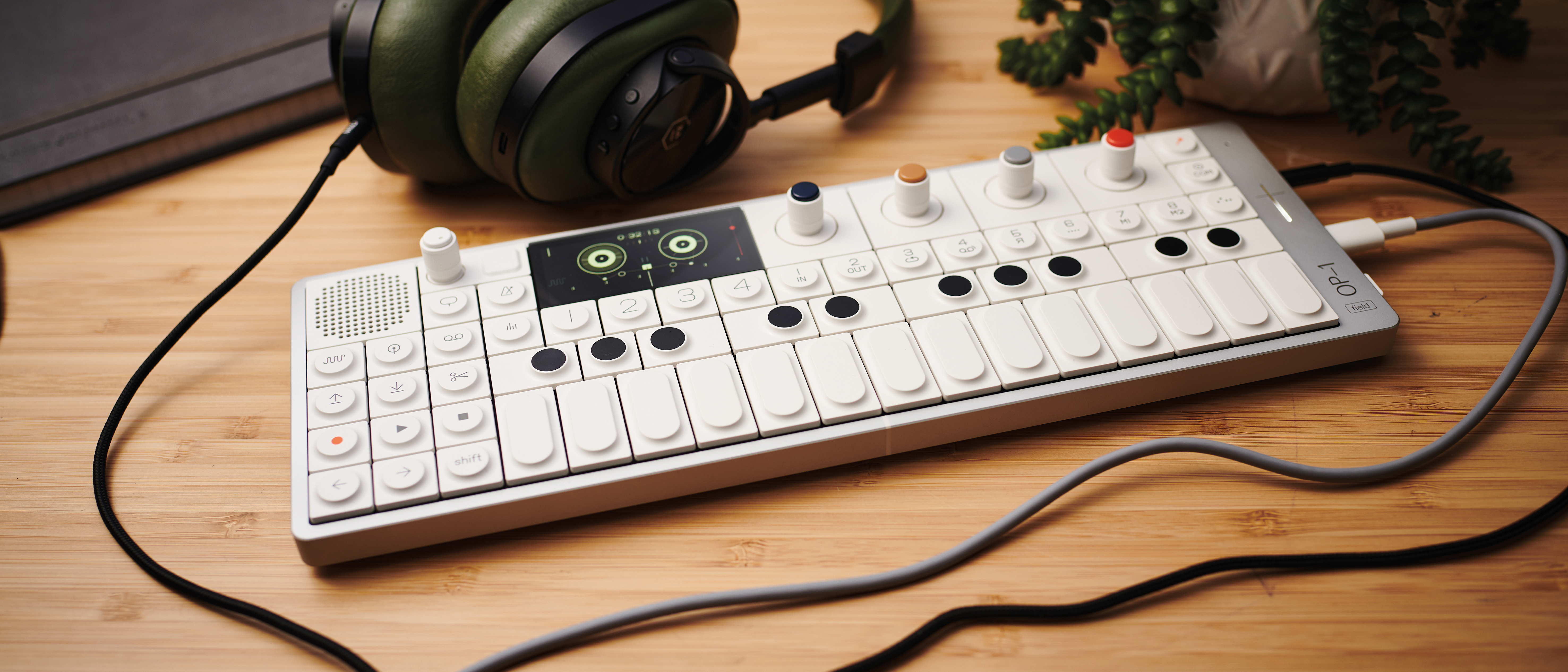MusicRadar Verdict
Field is a stunning evolution of the original OP-1. Only the price holds it back from scoring better
Pros
- +
Beautiful mobile sound – better than the original.
- +
Extra storage, tape and sampling.
- +
Inspiring sounds for leftfield composers.
Cons
- -
The price. Of course. Think of the number of hardware synths you could buy.
- -
Still no undo and quantise but the sequencing has been bolstered.
- -
Did we mention the price?
MusicRadar's got your back
Teenage Engineering OP-1 Field: What is it?
Has there ever been a piece of gear as cool, compact – and divisive – as Teenage Engineering’s OP-1? It is probably the most feature-packed and mobile piece of recording gear ever produced, with several synth engines, drums, sampling, ‘tape’ recording, effects, sequencing, and even an FM radio.
Over its 11-year reign of coolness, it has attracted everyone from Jean-Michel Jarre to Depeche Mode, Trent Reznor to, um, Elijah Wood with its charming ultra-sleek workflow and ‘take it anywhere in your hipster shoulder bag’ ethos. When it went out of production in 2018, such was the demand that its secondhand prices shot up to well over a grand, way beyond its £800 original asking price.
TE knew it was onto a good thing and reintroduced the original model a year later at its current (excessive) £1,399 asking price. But it also realised it was starting to creak a little with age, so at this year’s Superbooth announced OP-1 Field, not a successor to the OP-1, more a 2022 partner with 100 new features.
And with all of those additions, there was only one way its price was going to go. Yep, Field costs an almighty £1,999. We’ve been testing it for a few weeks now and it’s good, very good, and a big improvement over the original. But two grand? Come on.
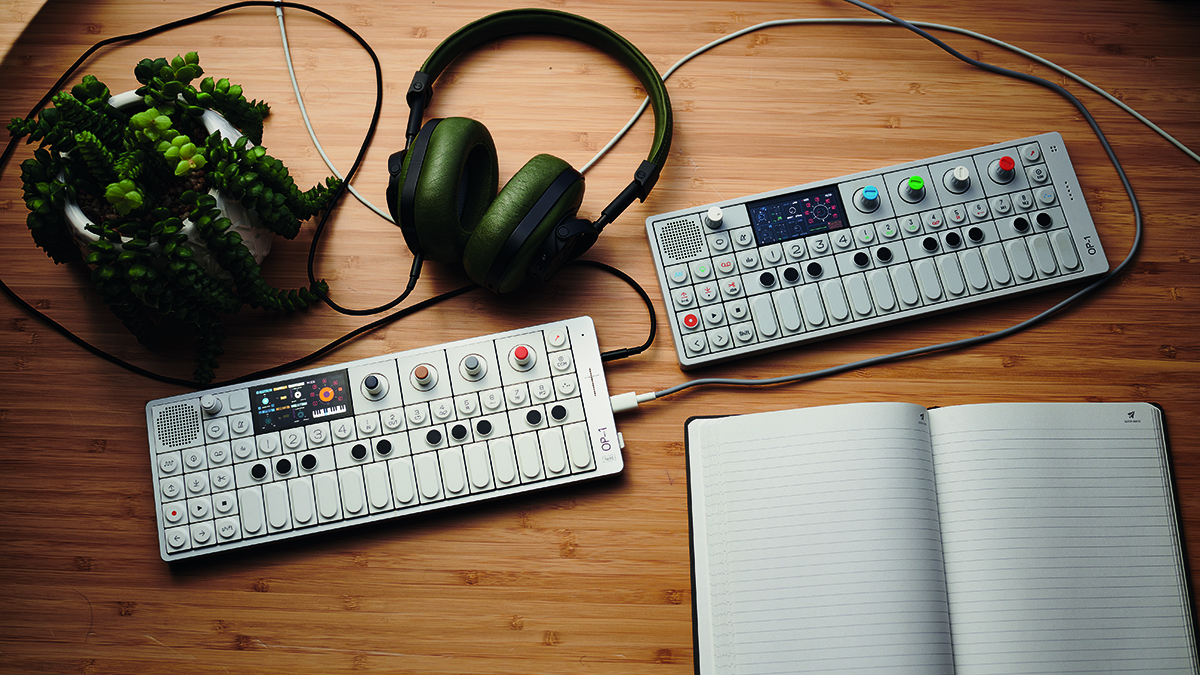
Teenage Engineering OP-1 vs OP-1 Field: which is the best portable synth?
We put the iconic hipster-friendly electronic instruments head to head
The new Field does pack a lot in. We did a side-by-side comparison with the original OP-1 in the last issue, but here’s a quick recap. While the two are very similar in appearance, Field is slightly thinner and boasts a crisper screen and better battery life (24 hours versus 16).
There’s a 32-bit/96kHz stereo signal path all the way through, whereas the original is mostly mono and 24-bit. Field has the same polyphony (six voices) but 30 more presets (200 and a further 300 locations), plus an extra drum kit (15), sequencer (eight), synth engine (14) and effect (eight).
Sample times have been increased to 20 seconds (from 12) and the overall storage gets a massive boost with 160 plus minutes of audio storage (OP-1 has just 24). The Tape Machine is still four tracks but there are four different types of recorder and eight slots available for songs.
There are many other extras. You can use Field to transmit on an FM frequency – yes, create your own radio station – and there’s an improved built-in mic, a better EQ, adjustable screen brightness and a ton of other tweaks and perhaps not-so-important extras (‘new packaging’ is on the list).
But the most important parts of Field are arguably just two new additions – that stereo sound and a completely redesigned speaker – plus one unchanged feature: its workflow. Users of the original OP-1 will be delighted that its ease of use has been retained, as has controlling the various functions with coloured parameters and four matching knobs.
It’s the speaker and sound that will have you smiling though. If you think the original is good – and next to your Volcas and other portable devices, it doesn’t sound too bad – then try playing the same preset synth sounds on the original directly next to the Field. It’s night and day.
The speakers look the same size but Field boasts one with a passive radiator that gives it welly and width to show off the stereo engines. Honestly, you’ll think the original sounds pretty shocking in comparison (or more positively, the Field just sounds so good). I’d almost argue that this is worth the upgrade price alone. Almost. We’ll come to the price later.
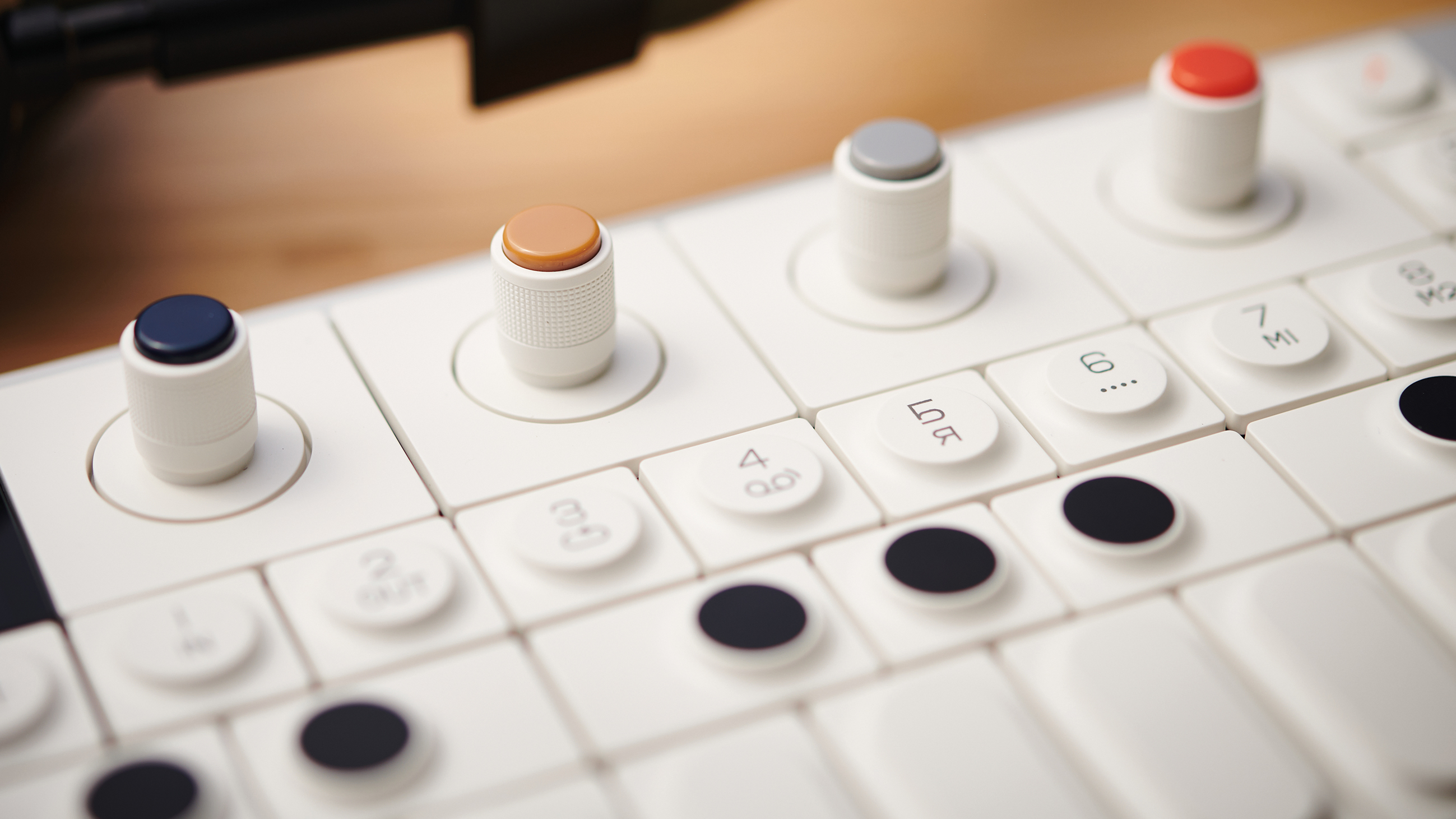
Field tested
Back to the workflow and we don’t think we’ve used a device of this portability and with so many features that is so well designed, which allows users to learn the basics in no time and that control/colour combination giving you a helping hand throughout.
No wonder TE didn’t really change the operating system so much from OP-1. You’ll soon find yourself delving into the depths of OP-1 Field simply because you have the confidence to do so. And the screen makes it all the more welcoming, with an all-new design and the sampling options being particularly boosted by the extra resolution and zooming – it’s proper wave editing as opposed to the now ’70s-looking tweaking on the OP-1.
As to the sound engine, you could argue that, with only one addition to synth types, sequencers, effects and drum kits (although these have been completely re-engineered), there’s not a lot sonically extra with Field.
But not only does the speaker give everything a new lease of life, but the extra features do also add a lot. So while we could spend the rest of this review just listing those extras, let’s focus on what they mean to the most important aspect of Field: its sound.
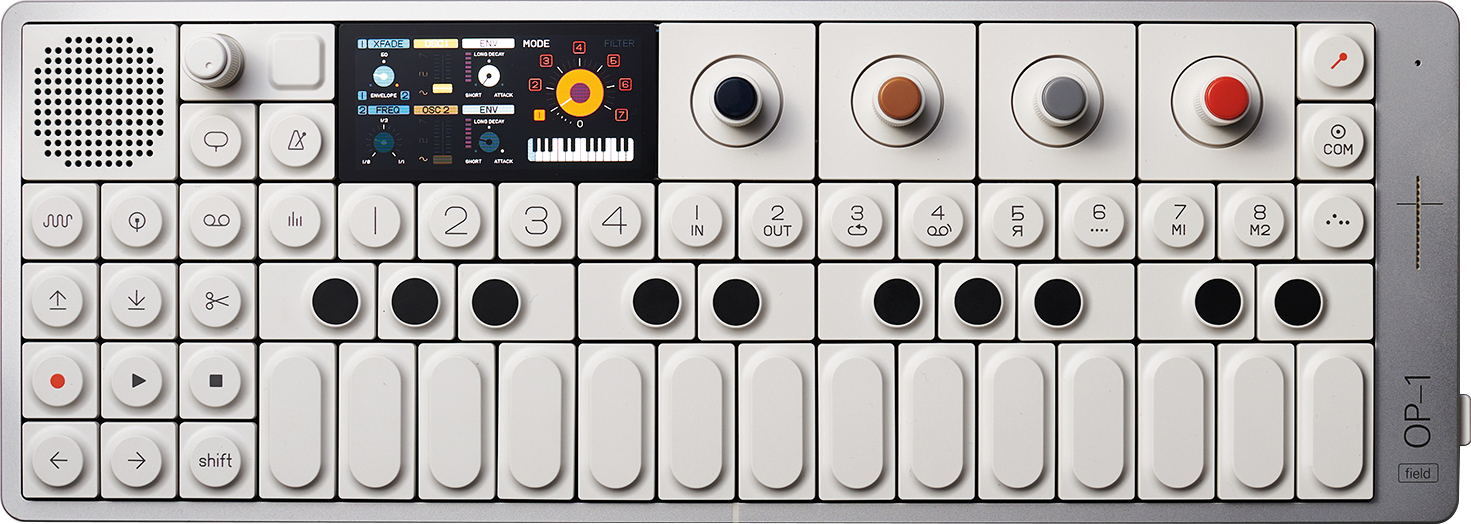

Teenage Engineering OP-1 Field: Performance and verdict
On the synth side, for example, the new Dimension synth engine is very flexible and solid, with controls to change the variable waveform, stereo width, frequency and resonance. Within the Synth section, as with the other three main areas (Drums, Tape and Mixer), the four keys beneath the screen take you even deeper.
The first shows the selectable Engine screen with the four parameters you can change, the second an adjustable envelope, the third a choice of eight effects (with the new Mother reverb being particularly good) and the fourth is an LFO section. Several modulation options include MIDI, random, tremolo and, my favourite, Element.
Here you can use external sources like the mic, FM radio and audio line in to modulate tuning, effects and more. As with the original OP-1, you can use the G-Force option to physically move the unit to modulate a parameter – and yes, it can still sound like a lightsaber if you wish.
The next main section is Drum which is beefier now, with all-new kits and the beats are harder, more varied and sharper. Either use the rather good DBox drum synth to create beats and kits from scratch or use the Drum Sampler.
Here a break is typically sliced into constituent beats and mapped across the keys. There are 15 varied kits to pick and, of course, you can sample in and create your own. Like the Synth Section, the four keys beneath the screen let you choose the Sampler of Dbox, envelope, effects and LFO options.
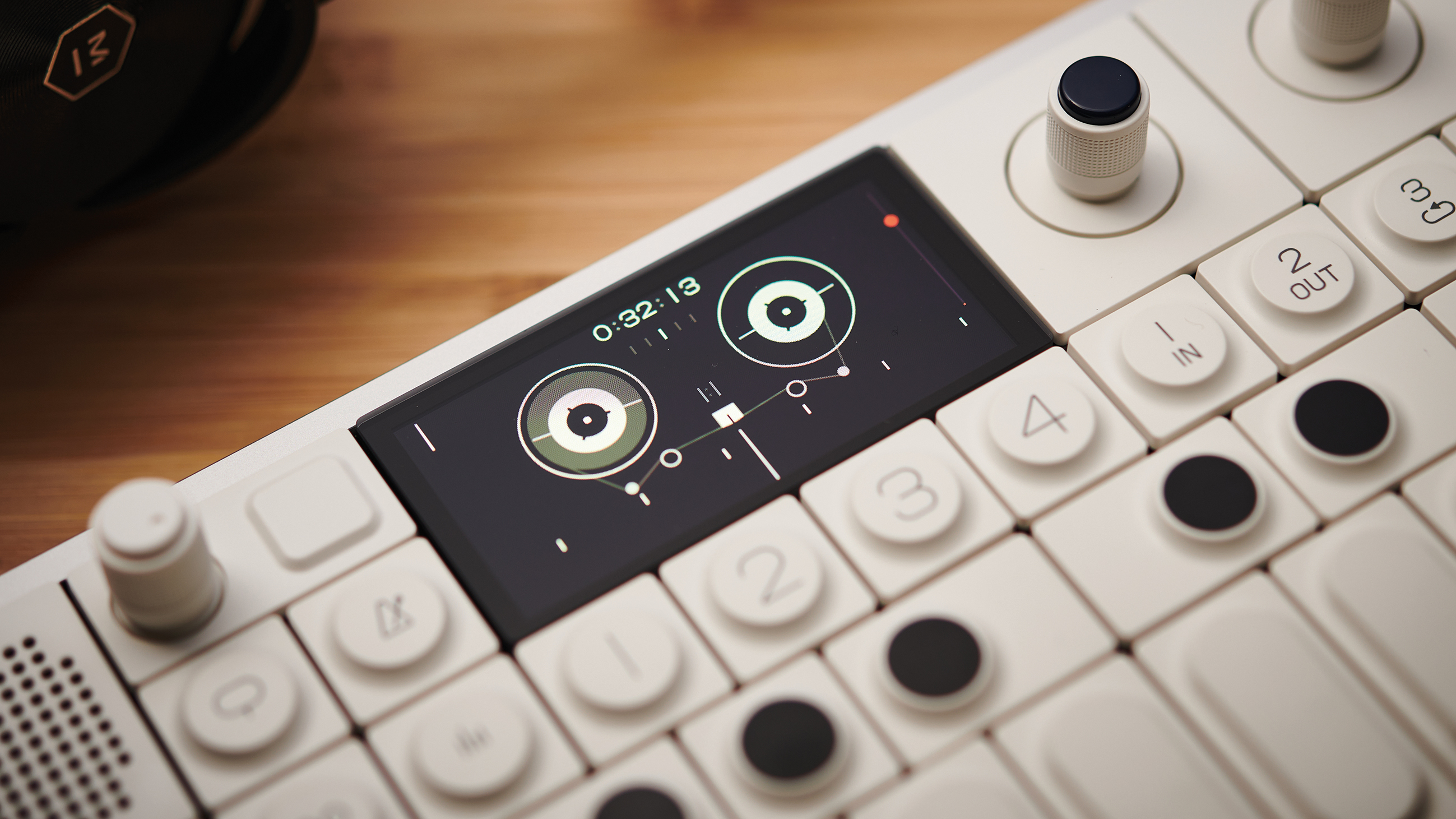
Commit to tape
This brings us to the third Tape section, another big update. This still has four tracks of recording but you now get six minutes per track and can store up to eight different tapes. To use the recorder, simply select a track, hit play and record together and play. There’s a metronome option and the number keys offer all sorts of ‘tape tricks’ like setting loop points, repeat effects, tape reversing and a form of automation.
You also get four different tape machine emulations to use – Vintage 4-track, Studio 4-track, Porta 4-track and Disk Mini. Studio gives you the highest 32-bit quality and total ‘tape’ silence, Vintage adds a bit of wobble and noise, Porta gives you cassette lo-fi hiss and Disk Mini gives, well, I wasn’t really sure. Slightly less volume to my ageing ears… Still, good to have the options.
As mentioned, the Tape section on OP-1 Field is very easy to use. It’s also easy to split, copy and erase parts of tracks, perhaps a little too easy on occasion, and that brings in one negative: the lack of any kind of undo. As the manual admits: “once all keys are pressed there’s no way back; your tape will be wiped forever”.
There are workarounds to protect your recordings but not an instant Undo button. Nor is there a quantise option as this is audio and not MIDI recording. Both of these were missing from the original OP-1 and split user opinions.
Ardant OP-1 supporters say that a lack of quantising gives the OP-1 its own human ‘style’, or helps your finger drumming and playing. And there are those that take it further saying that you could always export your audio from the OP-1 into your DAW, which kind of defeats the point.
Anyway, the Field doesn’t obviously fill these gaps that are left over from the original so you’ll have to use the machine’s (many) sequencing functions to keep better time – the Pattern Sequencer alone fills your beat creation needs. That or learn to play better (and do be careful what you erase).
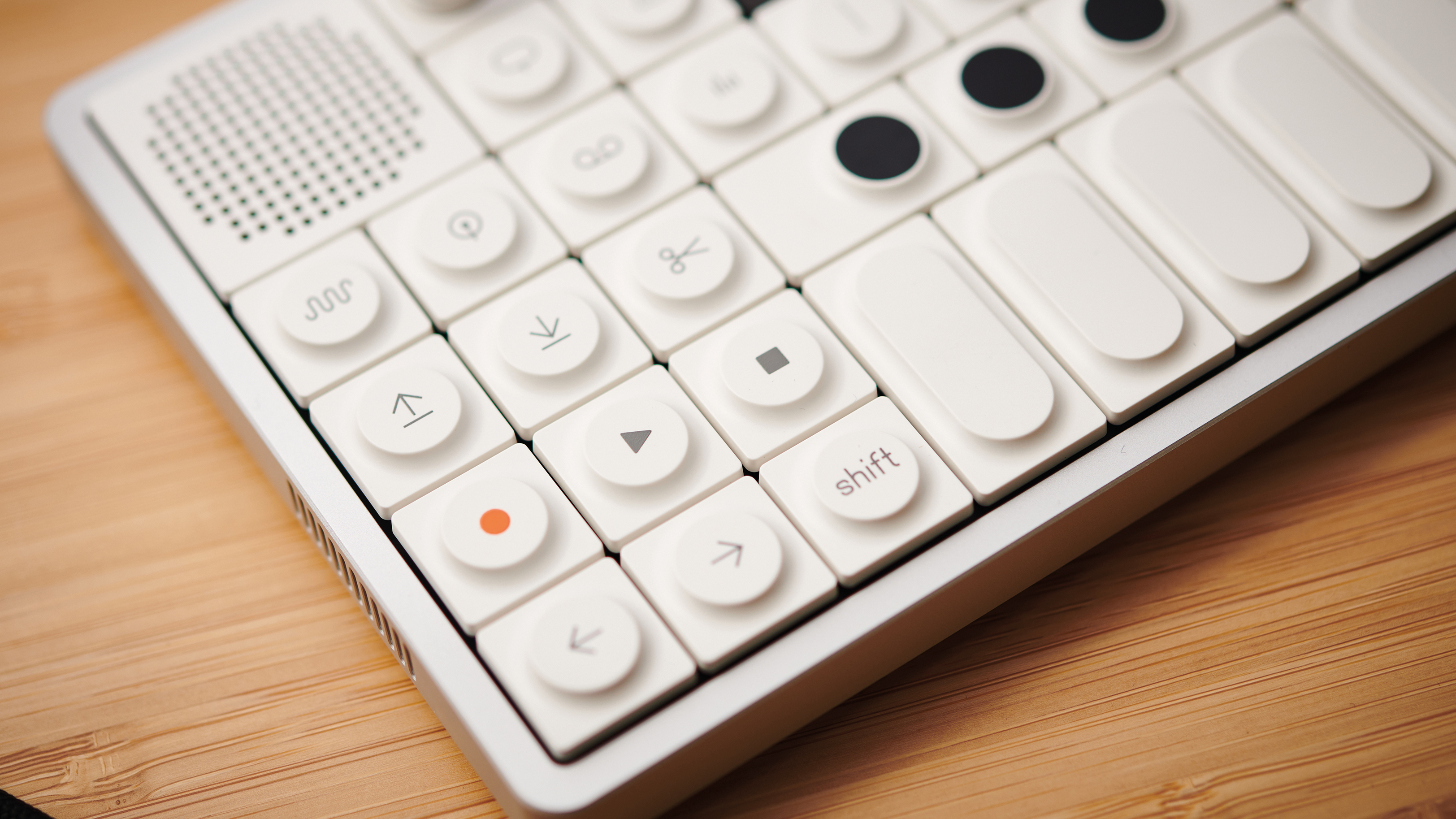
Why 2K?
Given the many other features, this is a great upgrade, but what about the biggest question of all: is it really worth £1,999? We're wrestling with it, to be honest. If you take Field for what you get – all of those synth engines, sampling, drums, sequencing, recording, effects, and so many more features all packed into a device you can literally take anywhere and make a pro-sounding album with – then perhaps £1999 doesn’t seem too bad.
But we can’t help picturing in our mind what two grand gets us elsewhere: the entire Korg Volca and Pocket Operator range, with change left over for a decent four-course meal.
We have to conclude that OP-1 is not worth the asking price. That said, this asking price can be reduced significantly if you shop around. We’ve seen Field for £1,599 (Thomann or BAX) which seems far more reasonable if you can get one (it currently appears to be sold out in many stores). And the original OP-1’s secondhand asking price is now a more reasonable £650 to £750 so that could also be a route to OP-1-ness if you want to risk it.
OP-1 Field is as controversial as the original OP-1. It is beautiful, feature-packed, easy to use and a stunning sounding device that is both expensive and divisive. It is, then, the perfect evolution to keep the OP-1 saga going. But if you’ve got £1,999 burning a hole in your pocket waiting to be spent on mobile music making? Get yourself a MacBook Air.
MusicRadar verdict: Field is a stunning evolution of the original OP-1. Only the price holds it back from scoring better.
Teenage Engineering OP-1 Field: Hands-on demos
Teenage Engineering
Andertons
Matthias Holmgren
Son Wu
Teenage Engineering OP-1 Field: Specifications
- 256 MB memory
- 32-bit/96kHz operation
- Complete stereo signal path
- 200 presets (up to 500 locations)
- 6-voice polyphony
- 14 synth engines
- 15 sampled drum kits (plus 10 D-Box kits)
- 8 effects
- 8 sequencers
- Tape with 160 minutes record time and four tracks each
- Sampler (20s)
- 3.5mm audio in/line in
- 3.5mm audio out for headphones/line out
- USB C port for charging, streaming audio, file transfers and MIDI
- CONTACT: Teenage Engineering
Andy has been writing about music production and technology for 30 years having started out on Music Technology magazine back in 1992. He has edited the magazines Future Music, Keyboard Review, MusicTech and Computer Music, which he helped launch back in 1998. He owns way too many synthesizers.
With its latest free update, Ableton has finally turned Note into the app I always wanted it to be
Technically capable, but struggle to make your tunes sound musical? 5 simple music theory hacks to make your tracks stand out
"Despite its size, it delivers impressive audio quality and premium functions as well as featuring a good selection of inspired sounds": Roland GO:Piano 88PX review
